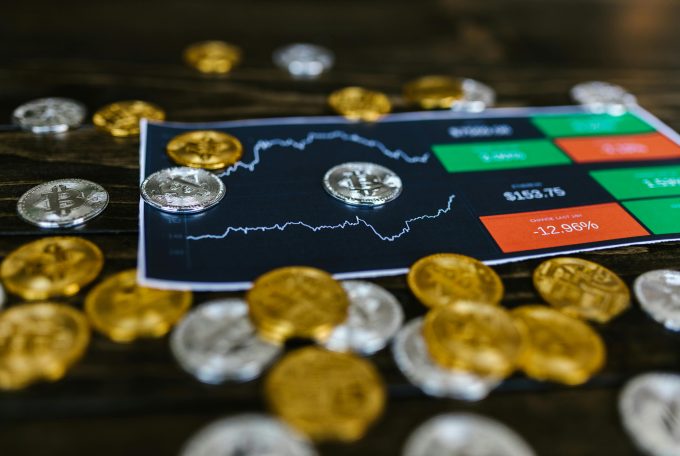In the dynamic and ever-changing realm of digital currencies and virtual marketplaces, alongside the revolutionary Bitcoin itself, and the infamous Silk Road, a now-defunct dark web marketplace, has undeniably shaped the global landscape.
This comprehensive article navigates the intricate narrative woven between these divergent entities, illuminating the shadowy facets that have captivated the collective intrigue while also raising concerns within society. If you are wondering about Bitcoin, delve into the topic of Bitcoin and the future of cybersecurity.
The Genesis of Bitcoin: A Game-Changer
Emerging in 2009, Bitcoin made a groundbreaking entrance as a peer-to-peer digital currency, fundamentally reshaping conventional notions of money and transactions. Attributed to the enigmatic Satoshi Nakamoto, Bitcoin ushered in the novel notion of a decentralized currency devoid of centralized oversight.
Its foundational blockchain technology ushered in unparalleled transparency, fortified security, and transactional anonymity, laying the groundwork for a transformative shift in the financial landscape.
The Silk Road: An Unprecedented Online Marketplace
In 2011, the Silk Road emerged as a groundbreaking online marketplace that operated within the dark corners of the internet.
Enabled by the anonymity provided by Bitcoin transactions, the Silk Road allowed users to buy and sell goods and services, including illegal substances, without revealing their identities. The Silk Road was a catalyst for Bitcoin’s adoption, as it became the preferred currency for transactions on the platform.
Bitcoin and the Silk Road: A Troubled Nexus
Dark Dealings and Illicit Transactions
The Silk Road gained notoriety for facilitating illegal activities on an unprecedented scale. Users could purchase drugs, counterfeit currency, and even hire hitmen using Bitcoin.
The anonymous nature of Bitcoin transactions made tracking and apprehending the perpetrators challenging for law enforcement agencies.
Law Enforcement’s Cat-and-Mouse Game
Authorities worldwide embarked on a relentless pursuit of the individuals behind the Silk Road. In 2013, the FBI successfully shut down the Silk Road and arrested its founder, Ross Ulbricht, who operated under the pseudonym “Dread Pirate Roberts.”
Ulbricht’s trial shed light on the extent of criminal activities facilitated by the platform and the role of Bitcoin as the currency of choice for these transactions.
Bitcoin’s Evolution: From Dark to Mainstream
Legitimacy and Institutional Adoption
While the Silk Road highlighted the illicit potential of Bitcoin, its subsequent evolution demonstrated its legitimate use cases.
As public awareness and interest grew, entrepreneurs and businesses began accepting Bitcoin as a form of payment. Major companies like Microsoft, Overstock, and PayPal integrated Bitcoin into their operations, marking its gradual transition from the shadows to mainstream commerce.
Regulation and Oversight
Governments and regulatory bodies worldwide responded to the rise of cryptocurrencies with mixed sentiments. Some embraced the innovation, recognizing its potential to reshape financial systems, while others remained cautious due to concerns about money laundering, tax evasion, and consumer protection. This resulted in various degrees of cryptocurrency regulation in different jurisdictions.
The Lessons Learned: Balance and Responsibility
The story of Bitcoin and the Silk Road underscores the intricate relationship between technology, society, and legality. While Bitcoin showcased the potential for decentralized, borderless transactions, the Silk Road highlighted the challenges of unchecked anonymity. As we move forward, it’s essential to strike a balance between innovation and regulation, fostering responsible use of technology without compromising security and ethics.
The Bright Future Ahead
The trajectory of Bitcoin, evolving from its origins intertwined with the Silk Road’s illicit activities to attaining recognition and legitimacy within the global financial arena, stands as a remarkable testament to its enduring resilience and remarkable adaptability.
The pivotal insights gleaned from its tumultuous historical context have played a pivotal role in shaping a more robust and regulated cryptocurrency ecosystem, laying a solid foundation for the potential transformation of financial paradigms and extending its impact far beyond the confines of conventional finance.
Conclusion
In the annals of technological and financial history, the convergence of Bitcoin and the Silk Road stands as a compelling narrative of innovation, subversion, and redemption.
From the mysterious origins of Bitcoin to the takedown of the Silk Road, the intertwined journey of these entities has shaped perceptions of digital currencies and online marketplaces.
As society continues to grapple with the complexities of emerging technologies, the story of Bitcoin and the Silk Road serves as a poignant reminder that progress must be guided by responsibility, ethics, and the pursuit of a brighter future.





